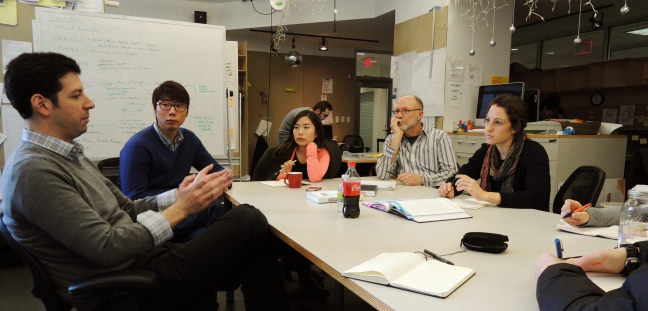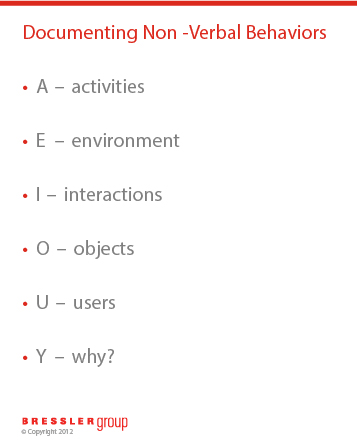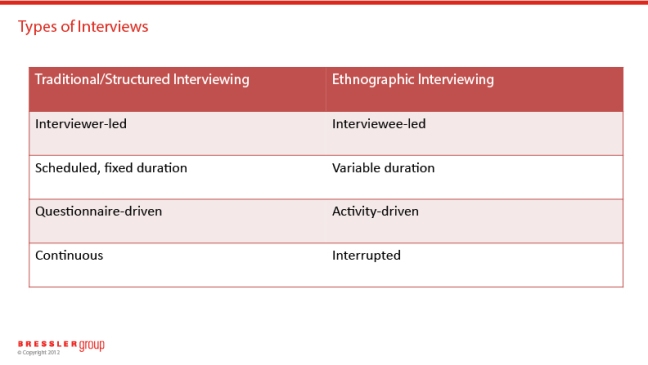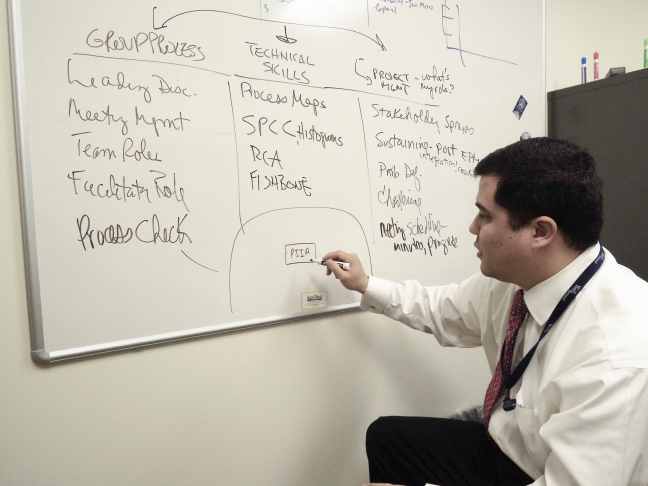As part of an independent study, Rob Tannen from Bressler Group came to the studio to talk about Ethnography. As an expert in ethnographic research, he shared his techniques on how to make insight discoveries during research. This was especially helpful because there is a lot of data to gather in interviews beyond just the spoke words. An acronym he introduced to us was and A-E-I-O-U-Y guide to documenting non-verbal behaviors.
Mr Tannen also continued by dissecting the pros and cons of interviewing. He shared some of the the pros of interviewing to be that they help gain a better understanding of the vocabulary and context that the individual is working/interacting. Interviews are usually scheduled time slots so they can be more manageable form of research as opposed to immersing yourself in an environment for an extended period of time. However, there are some constraints to interviewing. One significant obstacle is that wat people say does not always equate to how they behave. Behaviors are also complex and difficult to describe. In most cases these behaviors must be casually observed to get a more accurate understanding. This type of casual observation speaks more toward an ethnographic interviewing style vesus the traditional interview.
Researching human behavior has proven to be quite challenging. Rob Tanen’s insights have been helpful in clarifying the importance of looking beyond spoken answers. I think this highlights the value of using ethnographic research methods when researching human behavior instead of using traditional interviewing styles or even surveys to gather data. Those might be good at gathering quantifiable data but they can’t always capture the qualitative data that influences how & why people behave the way they do.



